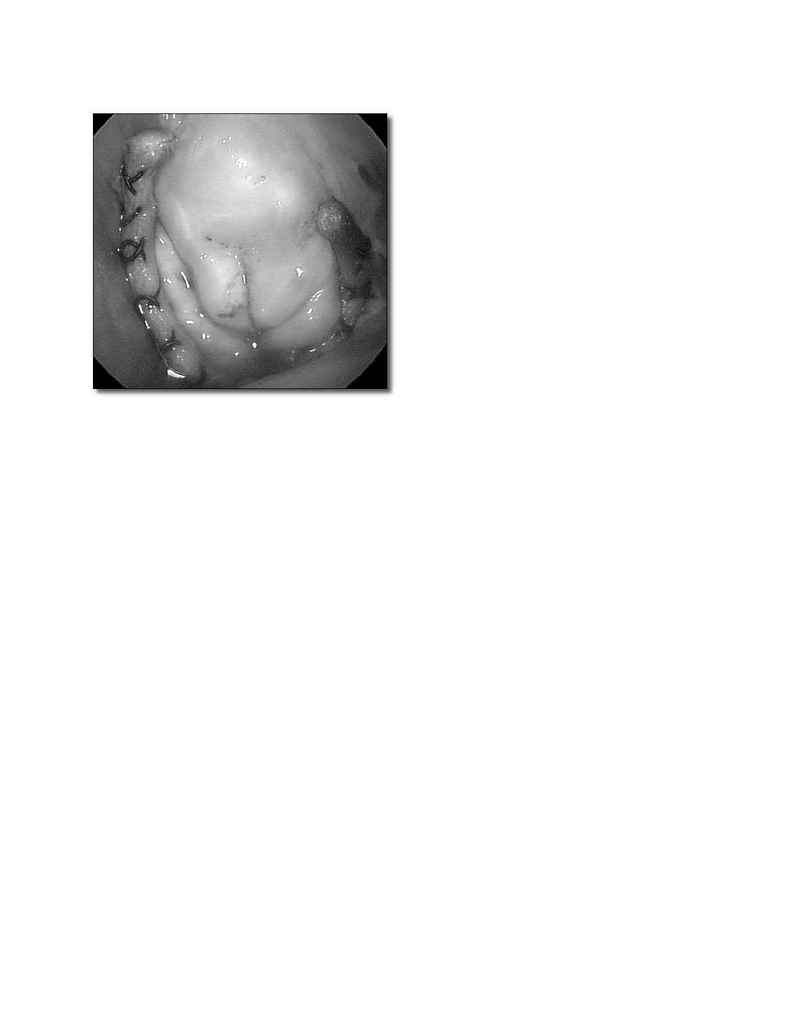
ROBOTIC CARDIAC SURGERY
Volume 13, Number 6, 2003
461
may visualize and manipulate simulated objects in-
teractively, and once optimal access port placements
are determined, the positions of the simulated tools
can be recorded and marked directly on the patient to
specify positions for port incisions. Current research
being conducted in collaboration with Carpentier is
focusing on simulating and planning robotic proce-
dures. Surgeons will have a virtual platform to analyze
and plan optimal topographic surface targets that
would optimize port site placement. Such three-
dimensional planning systems based on preoperative
imaging data have already been introduced into other
surgical specialties, including craniomaxillofacial and
orthopedic surgery.
VI. CONCLUSION
Clearly, advances in cardiopulmonary perfusion,
intracardiac visualization, instrumentation, and ro-
botic telemanipulation have hastened a shift toward
effi
cient and safe minimally invasive cardiac surgery.
Today, cardiac surgery, particularly valve surgery done
through small incisions, has become standard practice
for many surgeons. Moreover, closed-chest coronary
bypass surgery is in its early developmental phases.
A renaissance in cardiac surgery has begun, and
robotic technology has provided benefi ts to cardiac
surgery. With improved optics and instrumentation, in-
cisions are smaller. Th
e placement of wrist-like articula-
tions at the end of the instruments moves the pivoting
action to the plane of the operative fi eld. Th
is improves
dexterity in tight spaces and allows for ambidextrous
suture placement. Sutures can be placed more accu-
rately because of tremor fi ltration and high-resolution
video magnifi cation. Furthermore, robotic systems may
serve as educational tools. In the near future, surgical
vision and training systems may be able to model most
surgical procedures through immersive technology.
Th
us, a "fl ight simulator" concept emerges where one
may be able to simulate, practice, and perform the op-
eration without a patient. Already, eff ective curricula
for training teams in robotic surgery exist.
Robotic cardiac surgery is an evolutionary pro-
cess, and even the greatest skeptics must concede that
progress has been made. Surgical scientists must con-
tinue to evaluate this technology critically in this new
era of cardiac surgery. Despite enthusiasm, caution
cannot be overemphasized. Surgeons must be careful,
because indices of operative safety, speed of recovery,
level of discomfort, procedural cost, and long-term
operative quality have yet to be defi ned. Traditional
cardiac operations still enjoy long-term success with
ever-decreasing morbidity and mortality, and thus
remain our measure for comparison.
REFERENCES
1. Stevens JH, Burdon TA, Peters WS, Siegel LC,
Pompili MF, Vierra MA, St Goar FG, Ribakove
GH, Mitchell RS, Reitz BA. Port-access coronary
artery bypass grafting: a proposed surgical method.
J Th
orac Cardiovasc Surg 1996; 111:56773.
2. Pompili MF, Stevens JH, Burdon TA, Siegel LC, Pe-
ters WS, Ribakove GH, Reitz BA. Port-access mitral
FIGURE 7. Nitinol U-clipsTM holding mitral annuloplasty
band in place.
